Protestant religious architecture
Protestant religious architecture, or rather French Protestant religious architecture, is very varied. There is no one particular architectural style but rather several characteristics which reappear from one century to another and from one style to another; the banning of religious statues and paintings, a reorganization inside the church itself which lays the emphasis on the pulpit and the communion table rather than the altar, the fact that churches are full of light because of the large number of windows.
In the XVIth century, some churches were adapted while other new ones were built
When the Reformation became an influential movement in France, Protestants needed larger places of worship than the private houses where they had gathered before.
Protestants took hold of public places, abbeys, convents or Catholic churches which they adapted to conform to their spiritual beliefs:
- The banning of religious paintings and statues
- Réorganisation of the interior: disappearance of the altar and recounting around the pulpit and the communion table.
One could mention the following examples:
- The St Jacques church in Montauban,
- The convents of the Augustines and Observantines St Eugénie and Saint Etienne de Capduel in Nîmes,
- St Fiary church and the Jacobine convent in Agen,
- St Barthélemy church, St Marguerite church the refectory of the Augustine convent and the old Jeu de Paume in la Rochelle,
- The St Colombe chapel in Gap,
- The Notre Dame church in Montpellier,
- Several churches in Caen and Lyon,
- Buildings in Poët-Laval were rehabilitated and re-used.
New buildings
Then the Protestants had new places of worship built which were financed by their local community (Lyon, Rouen, Charenton); some noblemen who had been converted to Protestantism had chapels built on their estates (Chamerolles).
In the XVIIth century
After the death of Henry IV in 1610, the Edict of Nantes was no longer respected and any temple built after 1598 was systematically destroyed.
In Alsace things were different because it only became part of France in 1648, with the Treaty of Westphalia. For this reason, the Edict of Nantes was not applied there. Strasburg, did not become part of France until 1681 and its cathedral had been used for both Protestant and Catholic services during the last 150 years. Many temples in Alsace were used for ‘simultaneum,’ that is to say, both Protestants and Catholics would use the same church. What’s more, the Lutherans were less austere than the Reformed Church and it was possible to find religious pictures – they did not remove the religious images and statues which had been in the churches before they became Protestant.
This could also be said of the County of Montbéliard, which only became part of France in 1793.
Secret assemblies in the XVIIIth century
It is not surprising, if one considers the political climate of the time, that no buildings were built between 1685 and 1787: indeed, the Protestants had to hold secret religious assemblies.
Protestants who refused to convert to Catholicism or ‘new converts’ (who were in fact not Catholic at all) had to gather in isolated places to worship God: this is the time of the ‘Désert’, a tragic period due to the violent persecution of Protestants in the Cévennes, the Languedoc, Poitou, Normandy, in fact throughout France.
At the end of the XVIIIth century, however, non-Catholics were recognized due to the Edict of Tolerance, which was introduced by Louis XVIth in 1787. In 1789, with the Declaration of the Rights of Man, freedom of conscience was authorised, although it was only in 1791 that the Constitution allowed non-Catholic services to be held in public.
It was now possible for the Protestants to hold public assemblies and some new temples were built.
Temples at the end of the XVIIIth century
In Orthez (Pyrénées-Atlantiques) a secret assembly was established in 1757 and in 1789 the Protestant community was able to buy a plot of land and had a basic kind of barn built on it which was used as a temple; it was officially opened on 25 November 1790. At the beginning of the XIXth century, a peristyle of arcades was added onto the front and in 1821, Louis XVIIIth added an entrance gate bearing his monogram.
In Monneaux (Aisne) in 1792, a temple was built but sadly this was damaged in the First World War. It was, however, rebuilt thanks to the generosity of the American Episcopal Methodist Church.
In Bolbec (Seine Maritme) a legacy of money was left to the Protestant community in order to have a temple built. It came from Jean Guilmard, the son of a ‘new convert’ who died in London in 1782. The community decided to go ahead with the building in 1792 and it was finally officially opened in 1797.
Protestants were able to celebrate many more services than before at the time of the French Revolution, when property belonging to the Catholic church was nationalized and also in 1801 because of the ‘Concordat’ and in 1802 because of the ‘Organic Laws’.
At this time, many places of worship which had formerly belonged to the Catholics were used by the Protestants
The following places were acquired by the Government from the Catholic Church and given to the Protestants:
- The former abbey of St Ruf in Valence (Drôme)
- The former chapel of the Ursuline convent, which became the small temple; the former chapel belonging to the Dominican convent which became the big temple in Nîmes (Gard).
- The former chapel of St Eloi in Angers ( Maine-et-Loire)
- The former Carmelite chapel in Montauban (Tarn-etGaronne)
- The former chapel of the Annonciade (Temple du Hâ) in Bordeaux (Gironde).
In Paris, the following were given to the Protestants: the former St Louis du Louvre church, which was soon replaced by the Oratoire du Louvre and also the St Marie and Pentemont chapels; the Lutherans were given the Billettes church.
New temples which were built in the first half of the XIXth century
In this period there were many examples of temples built in the Gallo-Roman style; they could be circular or round and had a portico supported by columns:
- In Orléans (Loiret) from 1803-1839,
- In Nancy (Meurthe-et-Moselle) in 1804,
- In Marennes (Charente-Maritme),
- In Anduze (Gard) in 1823,
- In Rochefort (Charente-Maritime) in 1823,
- In Vauver (Gard) in 1825,
- In Chambon-sur-Lignon (Haute-Loire) in 1826,
- In Lasalle (Gard) in 1829,
- In Bordeaux (Gironde), Temple des Chartrons in 1832,
- In Quissac(Gard) in 1833.
The second half of the XIXth century
Like many Catholic churches of this period, many temples were Neo-Gothic or Romanesque in style.
Here are some examples:
- In Nantes (Loire-Atlantique) in 1830,
- In Munster (Haut-Rhin) in 1874,
- The Temple de l’Etoile (Paris) in 1874,
- In Saint-Maixent(Deux-Sèvres) in 1876,
- In Sancerre (Cher) in 1894.
Other temples contained new architectural elements:
In Paris, the Temple du Saint Esprit, Rue Roquepine, was built in 1865 by Ballu, using the architectural plans of Baltard (who designed the magnificent St Augustine church not far away). This temple has a magnificent stained-glass window inserted into the ceiling.
A period of many different styles (1880-1920)
This ‘picturesque’ period tried to be imaginative but the results were not always successful. Outside decoration varied considerably, there were regional styles (the ‘temple-chalet, said to be typically Norman) – the general design and the belfry would become more elaborate.
Some examples:
- The temple built in 1894 in Fontainebleau,
- The temple La Petite Etoile built by Charles Letrosne in 1911 in Levallois-Perret.
The only truly original example of this period is that of the Foyer de l’Ame (Paris, 1901): the pastor Charles Wagner had this built, using the architects Naville and Chauquet.
The XXth century
With the arrival of new building material such as concrete, a different architectural style came into being.
There are some interesting examples of modern architecture:
- The temple of Marseille-Provence (1954),
- The ecumenical temple/church in Port-Grimaud (1969) with a stained-glass window by Vasarely,
- The ecumenical centre in Jacou (Hérault),
- Buildings by Philippe Verrey between 1960 and 1970, such as the temple in Massy, Rueil-Malmaison…
Bibliography
- Sites
- Les temples protestants de France | Link
Associated notes
-
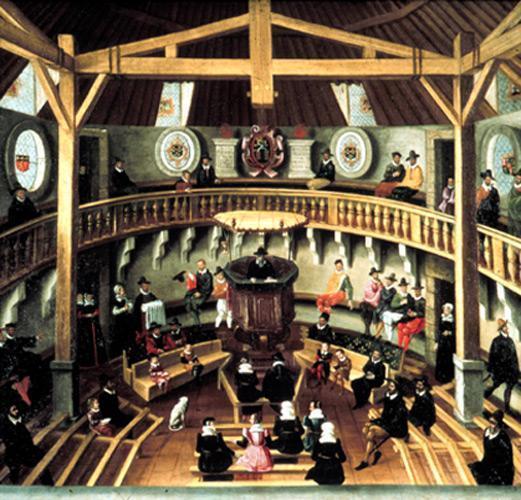
Protestant temples : from the 16th century to the Revocation
In 16th century France Reformed services were held in former Catholic churches and in new buildings. -
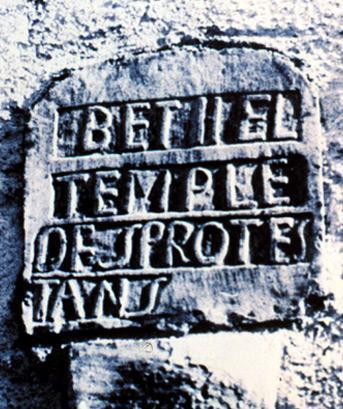
Inscriptions on stones coming from old temples
Thanks to these inscriptions we have traced some of the first temples to be built because the stones have been re-used in other buildings. -
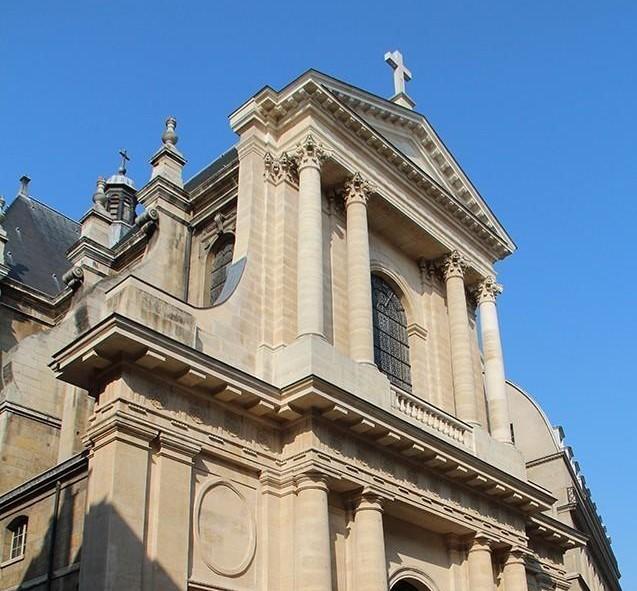
Civil and religious buildings turned into Temples after the Revolution
The nationalisation of clergy estates during the Revolution, and the disbanding of monastic communities left many churches, monasteries and abbeys unused. -
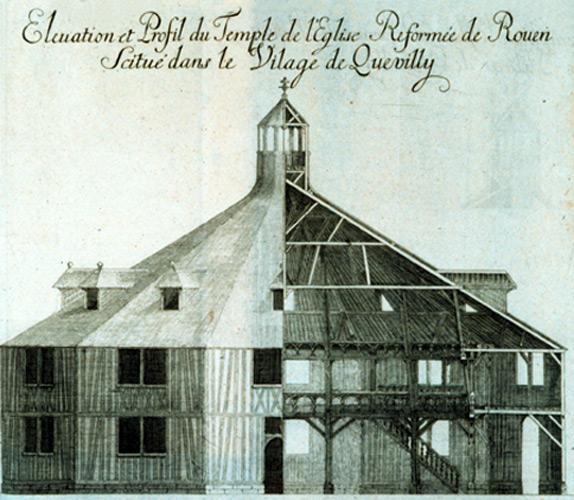
The architecture of 17th century churches
In the 17th century, Protestant religious architecture flourished all over France. Unfortunately few churches survive today – a large number were destroyed after only a short time. -
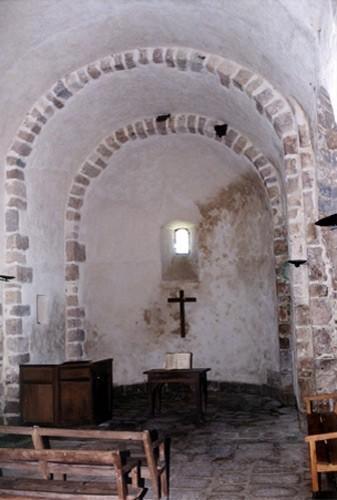
Catholic heritage churches became temples after 1802
After the organic articles of 1802, many previously Catholic Churches and Chapels were expropriated by the Revolutionary Government; they became the property of the nation. Many were then granted to... -

Temples built after the Revolution
After the Concordat and the organic articles of 1802, there was a big revival in French Protestantism. Many new Churches were built throughout France. -

Temples built before the Revocation of the Edict of Nantes
Most of the temples built during the XVIth and XVIIth centuries, before the Revocation of the Edict of Nantes (1685), have almost disappeared. They were quite big, built according to...
